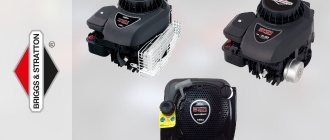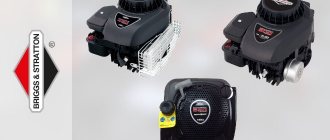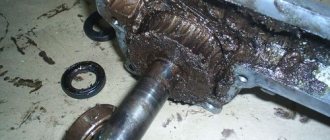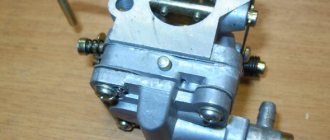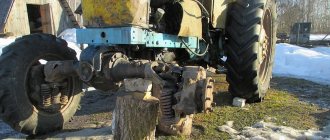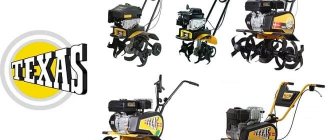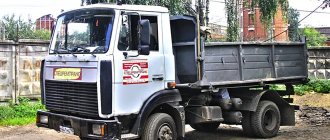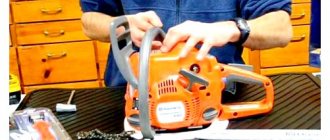Whether you're storing your equipment for the season or need to replace a part, find your equipment or engine manual to get information specific to your product.
Follow the guide below to find your product model number. Need help finding your model number? Download the numbering system fact sheet or use the model number lookup tool.
Engine: XXXXXX-XXXX (6 digit model) 0XXXXX-XXXX (5 digit model)*
*The 5-digit engine model number will have a 0 at the beginning.
Product: XXXXXX-XX (all products) 0XXXX-X (marine products)**
**Marine products use a shorter sequence of models.
What Briggs & Stratton equipment do you have?
Each small engine manufactured by Briggs & Stratton or bearing the Briggs & Stratton logo is suitable for many applications. The most popular of these is the lawn mower engine, which requires annual maintenance and sometimes repairs. This includes the small engines found in our snow blowers, pressure washers, portable generators and standby generators. So, either select your product type to enter your model number, use the very helpful search feature to find your product's model number, or contact your nearest Briggs & Stratton dealer to learn more!
Copyright © 2022 Briggs & Stratton, LLC. All rights reserved.
How to find & fix common small engine problems?
Engine problems?
Use this detailed guide when troubleshooting problems with your lawn mower, snow blower, or other outdoor electrical products, whether your product starts, stalls, or runs rough. CAREFULLY
! Always read the engine and equipment manual(s) before starting, operating, or servicing the engine or equipment to avoid personal injury or property damage. See your authorized dealer or contact Briggs & Stratton if you are unsure of any procedure or have additional questions. Find all engine hazard warnings
Engine Briggs&Stratton 450 Series (Model 09T5)
Briggs&Stratton 450 series are household engines from Briggs&Stratton, most often used for lawn mowers, cultivators and walk-behind tractors with worm gears. Briggs-Stratton 450 series engines are unpretentious to fuel quality and operate using A-92 gasoline.
Engine Briggs&Stratton 450 SERIES Model 09T5 is a single-cylinder gasoline engine with overhead valves (OHV) and a vertical power take-off shaft. Briggs and Stratton 450™ Series engines are equipped with ReadyStart.
- High power output with smaller displacement, complete efficient combustion, reduced silicon deposits, increased valve life, fuel economy
- Foam air filter
- Aluminum sleeve
- Prime'N Pull starting system
- Starter with a mechanical decompressor system: smooth, easy start and instant transition to maximum power mode after start-up
- Magnetron® Electronic Ignition System: Fast, Reliable Starting
- Larger muffler: reduces noise levels
- Oil-Guard® system: low oil shutdown system
Briggs&Stratton Model 09T5 engines are widely used for various types of operation: as part of complete units, in powerful ones from 3.5 to 5.5 hp. lawn mowers, motor pumps, cultivators.
You can purchase complete Briggs&Stratton engines, as well as components, consumables and spare parts for the Briggs&Stratton power equipment you need.
Characteristics Modifications Information
| Power, hp | 3.5 |
| Working volume, cubic meters cm | 148 |
| Working strokes | 4 |
| Cooling | Air |
| Cylinder type | Aluminum sleeve |
| Max. torque | 6.1 Nm / 3060 rpm |
| Piston diameter, mm | 65.1 |
| Piston stroke, mm | 44.4 |
| Oil sump volume, l | 0.6 |
| Volume of standard fuel tank, l | 0.8 |
| Dimensions, mm | 324 x 294 x 242 |
| Dry weight, kg | 9.0 |
Additional Benefits: AVS® Anti-Vibration System, Oil Filter, Full Pressure Lubrication.
Lawn mower/equipment engine will not start
Engine starting problems have several common causes, especially if you are using your lawn mower or outdoor power equipment after being stored during the winter or off-season.
Safety Tip: ALWAYS remove/disconnect the spark plug before performing engine repairs.
Step 1: Check the fuel
Is there fresh, clean fuel in your engine tank? If it's empty, fill it in and keep working! If it is full, make sure the fuel shut-off valve is open and clean.
Old fuel, dirt and debris are the most common reasons why outdoor power equipment won't start properly. If you store equipment with unrefined gasoline in the tank, it may cause engine damage.
Prevent this problem in advance by properly storing your lawn mower & outdoor power equipment. Using a fuel stabilizer prevents gasoline from causing problems in a small engine.
Step 2: Cleaning the carburetor
Carburetor Problems Keeping Your Lawn Mower Engine Starting The carburetor regulates the movement of air and fuel through the engine to propel your equipment. If it is dirty, it can cause poor engine performance or starting problems.
>> Follow these steps to clean your carburetor
Step 3: Check Spark Plug & Possible Ignition Problems
A common cause of engines not starting is loose, dirty or carbon-covered spark plugs. Spark plugs usually need to be replaced every season or 25 hours of use. You should also check the spark plug gap.
If the spark plugs look good, a problem with the ignition system may also be preventing the spark from occurring. These could include faulty spark plug wires, a shorted safety switch, or a damaged flywheel key.
Step 4: Check valves & compression systems
Air and fuel compression are critical to lawn mower engines and outdoor power equipment. The compression system consists of valves, pistons, cylinders and rings that control the movement of air and fuel vapor through the engine. Valves let air in (intake valve) and out (exhaust valve), pistons move back and forth to push the air-fuel mixture toward the ignition system, and piston rings keep the system sealed.
Lack of proper valve clearance or leakage can cause compression problems, preventing the engine from starting. You can check the compression system using a leak tester. If you do not have one, we recommend visiting a Briggs & Stratton service dealer to ensure the system components are in proper condition.
The most popular gasoline engines
Honda engine classification is represented by such series as GC, GX, GP, IGX.
The main features of Honda engines include air cooling and manual start; the weight of extremely productive units is 25 kilograms, and the balanced fuel consumption is 2.5 liters.
The most popular among other engines produced by Honda are the GX class engines. This series of engines undergoes regular modifications, and therefore their efficiency in terms of fuel consumption increases, and their environmental friendliness also increases.
GX series motors are high-quality components for general purpose and are designed for long-term and continuous operation in extremely difficult conditions. As for power, in most cases it does not exceed 15 horsepower.
In the spring of 2010, Honda launched the GX-240, GX-270, GX-340, GX-390 line. These units meet stringent EPA Phase 3 emission standards.
The improved models GX130, GX-160, GX-200 deserve attention.
The following improvements were introduced: variable ignition timing, higher compression levels, improved carburetor performance, and a lighter piston. They contributed to increased power and torque, increased fuel efficiency, and reduced vibration and noise. In contrast to the characteristics, the dimensions and external outlines have remained virtually unchanged. This has led to the fact that the engines of this series are easily replaced; this process does not cause any special difficulties. It is worth noting the CG springs introduced into this series and which are particularly reliable.
Small engine doesn't work well
Use this simple list of questions and answers to troubleshoot minor engine problems in your lawn mower, snow blower, or other power equipment.
The engine stalls or runs rough
When your engine starts and stalls, it is often due to poor maintenance. Prevent possible engine stalling by using a tune-up kit. See the "Why won't my engine start" section above or use the questions and answers below.
Is the fuel in the tank fresh?
Stagnant, unrefined gasoline begins to break down after about a month. Drain the gas from your lawnmower or outdoor power equipment, then refill with fresh gasoline and fuel stabilizer to extend its life.
Is the air filter dirty/clogged?
Clean or replace the air filter.
Is there heavy carbon deposits on the spark plug?
Clean spark plugs, if applicable (follow instructions for checking and replacing spark plugs).
Is the engine oil fresh?
Check the oil level and appearance every time you use the engine while it is cold. The oil should be changed every 25 hours of use or every season. (See Checking and Changing the Oil in the Mower)
Source
general information
The Briggs & Stratton I/C 6.5 general purpose gasoline engine provides easy starting, quieter operation and longer service life. Thanks to OHV technology combined with a Lo-Tone muffler, these engines save fuel while delivering optimal power and high torque.
Briggs Stratton IC 208cc cm are installed on:
- walk-behind tractors
- motor cultivators
- vibrating plates
- high pressure washers
- other power equipment
To install the engine on some walk-behind tractor models, an adapter plate may be required.
Features of B&S I/C 6.5:
- Dura-Bore Cast Iron Liner Cylinder: Resists wear and misuse while providing improved oil control.
- Float carburetor for consistent easy starting.
- Maintenance-free Magnetron electronic ignition for fast, reliable starting.
- Dual-Clean High Flow Air Purifier: Pleated paper filter, foam pre-filter and debris ejection slots provide superior protection.
- Overhead valve (OHV) design for cool operation and longer valve life.
Intek I/C 6.5
There is a version of this model - Intek I/C 6.5 - with some improvements.
Features of Briggs & Stratton Intek I/C 6.5:
- Compact overhead valve: Runs cleaner and runs cooler - provides more power, longer engine life and improved fuel economy.
- High performance cylinder head: 20% more power than conventional engines, improved fuel efficiency and significantly reduced emissions.
- One-Start Carburetor: Delivers fuel quickly for first-try starts and smooth operation.
- Heavy Duty Bearing: The self-lubricating ball bearing is made of bronze-coated steel to resist loads and reduce wear.
- Large capacity fuel tank: allows you to refuel the engine less frequently.
- Mechanical governor: controls the throttle to provide more power for demanding applications.
- Fuel shut-off valve: Easily shut off the gasoline supply for safe transportation.
- Lo-Tone Muffler: Provides smoother, quieter performance.
How to check and fix minor problems with the engine ignition system?
Is your lawn mower, snow blower or outdoor power equipment engine having no spark? Follow this guide to test the ignition system, including coil, module & relay, to identify any problems and troubleshoot.
If you know your specific problem, skip to the section for step-by-step instructions.
CAREFULLY
! Always read the engine and equipment manual(s) before starting, operating, or servicing the engine or equipment to avoid personal injury or property damage. See your authorized dealer or contact Briggs & Stratton if you are unsure of any procedure or have additional questions. Find all engine hazard warnings
How do the ignition systems work in small engines & lawn mowers?
The ignition system is the starting system for your small engine. If you start the engine using a cable or key on an electric starting motor, you are relying on the ignition system to produce a spark inside the combustion chamber.
Small engine ignition system parts
- Flywheel with magnets
- Reel or anchor
- Push button or cable start (depending on your engine type)
- Spark plug wire
- Spark plug
When you start a lawn mower or small engine, you turn the flywheel and its magnets pass through a coil (or armature). This creates a spark. The ignition system adjusts timing so that the spark ignites the air-fuel mixture in the combustion chamber when it reaches maximum compression in each engine cycle, thereby maximizing engine power.
Once the engine is running, the flywheel continues to spin, the magnets continue to pass through the coil, and the spark plug continues to produce a spark at a certain frequency.
Types of ignition systems
- Solid State Systems. These are more modern systems. They use a tiny transistor in a coil or armature that completes an electrical circuit that runs through the spark plug wire to the spark plug(s).
- Systems with circuit breakers. They are used in engines manufactured before 1980. These systems use a mechanical switch instead of a transistor to complete the electrical circuit used to create the spark.
Common Flywheel Problems
If you are experiencing ignition problems
, this is most often associated with a sheared flywheel key.
You can also check the flywheel magnets
for any potential problems.
For information on this, visit the Flywheel and Key Inspection FAQ.
Common Spark Plug Problems
- The required spark plug gap and voltage may vary depending on temperature, altitude and engine settings.
- Old, damaged or dirty spark plugs may also need servicing or replacement.
How to check the ignition coil in a small engine
Hazard warnings
: When attempting to start the engine or equipment, avoid any rotating, moving parts or other hazardous areas.
The coil is probably the easiest to test, so it's the first thing to check when troubleshooting your ignition system.
Checking the coil or armature
- Step 1
: Attach one end of the spark plug indicator (P/N 19368) to the ignition cable and the other end to the cylinder head as shown below.
- Step 2
: Rotate the flywheel quickly (at least 350 rpm) and watch for a spark to appear in the indicator window.
If a spark appears in the indicator gap, the ignition coil is working normally. If not, it needs to be replaced.
How to adjust pusher clearances
During operation, the valves are ground in, removing a certain amount of outer coating, so after grinding in or reinstallation, it is recommended to adjust the pusher clearances.
Description of the procedure.
- After installing the valves, you need to turn the crankshaft clockwise up until it stops. Make sure installed parts are tightly closed. Now we turn the same shaft at the top point - let the piston move a quarter away from the cylinder head.
- Using a feeler gauge, check the gap. To increase it, you can grind the tip of the square rod, first removing the pusher. Experts advise constantly checking the length so as not to cut off excess metal.
- Clean the individual parts thoroughly. Then you need to thoroughly lubricate the valve stem and guide - a special lubricant is used for this. At the end of the procedure, check to see if there is any lubricant at the ends of the pusher.
Adjusting the top valves is as simple as the previous one. The main thing is to follow the following recommendations:
- release the brake spring;
- turns the handwheel to close both tappets;
- insert a narrow screwdriver into the hole of the spark plug - you need to reach the piston;
- turn the flywheel clockwise - the piston should drop below top dead center by one fourth;
- the range of motion should be measured with a screwdriver;
- experts advise all owners of V-shaped carburetors to carry out this procedure;
- The clearance must be checked using a feeler gauge, placing it between the rocker arm and the valve head. Keep in mind, both gaps have different sizes: 0.002-0.004 and 0.005-0.007;
- when turning the rocker screw, we begin to adjust the gaps - do this at your own discretion;
- Finally, do not forget to tighten the nut;
- When installing the cover, you can replace the gaskets (in case of wear), and then check the reliability of fastening.
The American company Briggs & Stratton produces durable, wear-resistant, efficient engines for walk-behind tractors for various purposes. Thus, the equipment is equipped with the latest technologies that significantly facilitate the work process as a whole: it reduces noise levels, protects against wear, and reduces fuel consumption. When purchasing a device of this brand, it is important to decide on the type of household or construction work. The specialist will select the optimal model for you, which, by the way, comes with a guarantee in case of a malfunction of the mechanism after the first or second start.
Review of Briggs and Stratton brand lawn mowers. Technical characteristics and operating rules
The American company Briggs and Stratton is known throughout the world as a manufacturer of engines for various equipment: lawn mowers, walk-behind tractors, mini tractors, trimmers. Briggs and Stratton engines can be divided into two broad categories: air-cooled and water-cooled.
All motors are designed for outdoor equipment.
The company's headquarters is located in Milwaukee (USA). There, the company's engineers and mechanics develop, assemble and sell the final product, distributing goods off the plant's assembly line throughout the world.
For more than a century, briggs and stratton has been producing motors of various power levels that meet international quality standards and have great power and durability.
The distinctive characteristics of briggs and stratton engines are:
- high environmental performance (ECO-PLUS™ technology);
- additional technologies (ECO PLUS Permeation - protection against the leakage of harmful substances through the gas tank, fuel line, seals and gaskets, ECO PLUS Ventilation - reduction in the amount of exhaust through the ventilation system);
- the E SERIES™ concept, according to which the most important indicator in an engine is the low level of toxicity of exhaust emissions emitted by the engine;
- power;
- durability;
- high reliability and no need for frequent repairs;
- easy start.
Categories of modern Briggs and Stratton engines
Briggs and stratton E Series Logo.
Motors in this category have a low level of toxicity, a super-powerful new quick start system, and also combine functionality and the ability to operate for a long time.
Briggs and stratton EX Series Logo.
A series that combines all the advantages of the previous one, also equipped with a ReadyStart® launch system. The best option for fast work and optimal functioning of a lawn mower or walk-behind tractor on your site.
Briggs and Stratton EX-SERIES ECO-PLUS
A combination of the qualities of the two previous series with ECO-PLUS™ technology. These engines produce the smallest amount of toxic substances, they have a reduced amount of fuel evaporation, and they ideally fit into the concept of environmentally friendly technology that does not pollute the air and vegetation.
Trademarks under which briggs and stratton sells equipment with its original engines in European countries (European product line):
Each original motor has a corresponding serial number, using which the owner of the equipment can find the original engine operating manual on the manufacturer’s website.
Prices and analogues
The complex design of the internal combustion engine determines a significant increase in its cost. The products of the brand in question are sold at prices ranging from 15 to 30 thousand rubles. When choosing analogues, you can also pay attention to motors that are produced under the following brands:
When choosing, attention is paid to the volume of the combustion chamber, power and the cooling system used. The most common options are air-cooled, because... they are much easier to use and cheaper.
Correct installation of the engine on the walk-behind tractor will ensure its long-term operation. Tools and plumbing skills are required to complete the job. Don’t forget that you have to drain the oil and fuel in the winter.
Model range of garden equipment
For garden lawn mowers, Briggs and Stratton offers the following power unit models (regardless of the brand under which the devices are sold):
- 450E Series™;
- 500E Series™;
- 550E Series™;
- 575EX Series™;
- 625E OHV;
- 625E Series™;
- 650E Series™;
- 650EXi Series™;
- 675EX Series™;
- 675EXi Series™;
- 675IS InStart®;
- 750EX DOV®;
- 750EX DOV® I/C®;
- 800E Series™;
- 850E Series™;
- 850E I/C®;
- 875EX Series™;
- 875iS InStart®;
- 950E Series™;
- E 900 (the most powerful engine currently available from the manufacturer).
Briggs and Stratton power units are installed on lawn mowers from many global manufacturers, for example, Husqvarna, Makita, Champion, AL-KO, Viking, Mc Culloch, Stiga and others.
Popular mower models
Let's look at the most popular models of gasoline lawn mowers, which are powered by Briggs & Stratton engines.
AL-KO 119468 Highline 523 VS
Depending on where the mower was purchased (official store, online boutique or reseller), the cost of this unit can vary significantly - from 40 to 56 thousand rubles. At the same time, the official manufacturer often holds various promotions and sets discounts.
The advantages of this model include a pleasant design, as well as cost-effectiveness of use. When operating a lawn mower, there is no need to pump gasoline. In addition, the ergonomic control handle ensures ease of use. The device also has a low noise level.
Lawn mowers with briggs and stratton power units
This category of lawn mowers includes both self-propelled and non-self-propelled models. More accurate technical characteristics of a particular lawn mower can be obtained by studying the operating instructions (manual) in more detail before purchasing the device. You can also access the manual on the manufacturer’s official website by entering the engine model number in a special field.
Below are the official brands promoted by the company in the global market. Motors from an American manufacturer are also installed on other lawn mowers of Finnish, German, Polish, Swedish, and Chinese production. The brands listed below are from the USA and are sold throughout Europe.
Operating instructions, maintenance of lawn mowers
Rules for engine maintenance using the example of the operating manual for a lawn mower with a Briggs and Stratton 500 series 158 cc engine:
- daily or every 5 hours - clean the grille that protects against debris, clean the safety shield;
- every 25 hours of operation - maintenance, cleaning the air filter;
- every 50 hours or once a season - you need to change the oil, check the condition of the spark arrester;
- every 100 hours or once a season - servicing the air filter cartridge, cleaning the cooling system, changing the oil in the gearbox;
- Once every 100-300 hours it is necessary to clean the combustion chamber from carbon deposits.
Oil and fuel
Oil for a Briggs Stratton lawn mower, according to the manufacturer’s recommendation, must be chosen in a strictly defined category. For example, the quality class must be at least SF; a class higher than SJ is allowed. There is no need to use oil additives. The oil viscosity should be at SAE30 level if the air temperature at which the lawn mower is operated is plus 5 and above.
The oil in the lawn mower must be changed according to the operating manual (see information above).
At air temperatures from minus 18 degrees Celsius to plus 38 degrees, use 10W30 oil for lawn mowers; it gives easy starting, but increases the risk of engine overheating if the air temperature crosses +28 degrees.
Oil articles for lawn mowers used in summer and spring: 100005 and 100028.
Gasoline for a mower with a Briggs and Stratton engine should only be of good quality. The ideal choice would be unleaded gasoline with a minimum octane number (87/87 AKI (91 RON). Do not use cheap gasoline such as E85. Do not mix different types of fuel. The shelf life of the lawn mower with gasoline in the gas tank should not exceed 24 months.
Oil selection
Manufacturers of Briggs & Stratton brand engines recommend that users use a strictly specific type of oil. Its category must be at least SF, but a class higher than SJ is also allowed. There is no need to use any additives. The oil change should be carried out strictly according to the instructions that come with the device.
If the ambient temperature in the area where the grass mower is operated is in the range from -18 to +38 degrees Celsius, then the manufacturer recommends using 10W30 oil. It will make it easy to start. At the same time, keep in mind that if you use this product, there is a risk of overheating the device. Either way, only high quality oil should be used.
Troubleshooting lawnmowers with Briggs and Strattons engines
| Malfunction | Cause | How to fix it? |
| 1. Lawnmower won't start | Poor fuel quality, lack of contact in the spark plug wire, malfunction of the air damper | Check the specified parts of the device, correct any deficiencies |
| 2. The lawn mower stalls while working. | Low quality oil or lack of it. Low battery charge for engines with electric starter. | Add oil or change it. Charge the battery. |
| 3. Smoke is coming from the mower engine. | The oil level may be too high; Air filter contamination | Eliminate the indicated shortcomings |
| 4. The lawn mower vibrates a lot | Mounting bolts are loose; the crankshaft is bent; knives were damaged | Tighten the bolts, check the crankshaft and knife |
| 5. The engine turns itself off | Low fuel level; lack of ventilation | Add gasoline, check the condition of the ventilation hole |
Briggs & Stratton I/C engine design
- Cylinder
- Piston
- connecting rod
- Crank and crankshaft
- Valves
- Flywheel
- Carter
- Crankshaft. The crank is a lever that is connected to the end of the connecting rod by a pin connection with the other end rigidly connected to a shaft called the crankshaft.
- Valves are devices that control the flow of intake and exhaust gases into and out of an engine cylinder.
- Flywheel is a heavy wheel mounted on the crankshaft to ensure it rotates evenly.
- Crankcase - The lower part of the engine that serves as a housing for the shaft and a sump for lubricating oil.
Four-stroke gasoline engine I/C:
- Fuel suction
- Compression
- Power stroke (combustion)
- Exhaust

